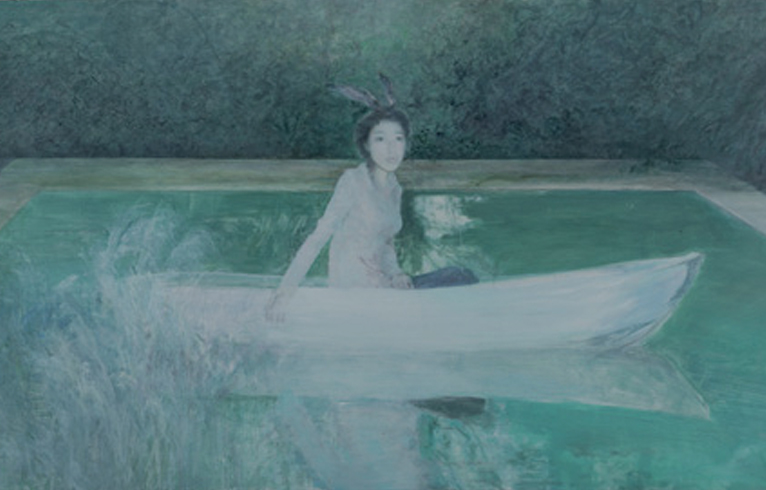HE DUOLING: LITERATI, LITERATI
| October 18, 2011 | Post In LEAP 10

Securing loans of key works Spring Winds Have Awoken and Youth from the National Art Museum of China sealed the predictable decision to organize a new solo exhibition for He Duoling in Shanghai. Harking back to the 1980s Chinese art scene, the two paintings are representative works of the broader “Scar Art” movement of the time. It could be said that He’s importance to the current art scene is largely due to the immense reputation he established for himself during that early era. But apart from evoking the still youthful ghost of He’s generation, as well as the not quite distant memories of those who were around during that period, both paintings act forcefully as agents of nostalgia, a state which, no matter how actively emotional it may be, still conceals a tendency towards evasion.
However, the intention of this artist in organizing a mid-career retrospective was not to encourage nostalgia, even if its Chinese title employs a somewhat clichéd “classical” poetic tone: a homophone of “time flows like water,” a phrase stolen from the sagely lips of Confucius and transported to the present. But time here is a lucid, pragmatic linearity, intended to establish He Duoling as a contributor to the present. Over the past couple of years, exhibitions revisiting recently bygone eras have become commonplace, but this exhibition has made the least effort out of any of them. It contains no documents or artifacts of its era. It does not attempt to reconstruct an atmosphere, nor speak of the conditions of that period, and it does not adhere to the system of “classification” laid out by academic discourse. Instead, the gallery space is divided into three sections: the exhibition hall on the left hosts a small-scale retrospective; the right contains He’s output from the last two years; and the corridor that runs between the two contains the artist’s sketches, drawings and architectural plans, as well as a short introduction to his Chengdu studio designed by architect Liu Jiakun.
And so the audience, exposed to the paintings of He Duoling and little else, become enclosed from the outside world. This enforced separation turns the focus onto He’s practice itself, one further intensified by the homogeneity of the paintings, every single one of which depicts the female body. Here, one may notice that He does not take part in a particularly lively logical dialogue: the two classically oriented works Spring Winds Have Awoken and Youth demonstrate how his practice merely absorbs existing art-historical narratives into its own unique system. But in comparison to his older, better known paintings, the formal language of his recent efforts seems more relaxed, prosaic, and defined by more subtle use of color. However, his primary focus remains aesthetic in the purest sense, and his new paintings construct firm additions to his own graceful and mysterious form of realism. Of course, this has everything to do with outstanding painterly skill. And yet one cannot shake the feeling that when this skill is pushed to its limit, some of its beauty falls away, and a sullen inertia is revealed.
The wisdom of this exhibition lies in its restrained curation, including the paintings of He Duoling and no more. Similarly, the unmistakable tone of the title, which lifts the concept of the “literati” from traditional Chinese elite culture, in a sense encapsulates He’s own unique character, self-cultivation, his refined Weltanschauung. But can the various postures featured in his new “Rabbit” series, born out of the very depths of his aesthetic sentiments, draw the attention of a current audience? Does his aesthetic vision really flow with the times, or is this so-called literati way of thinking just too aloof? Sun Dongdong (Translated by Dominik Salter Dvorak)

